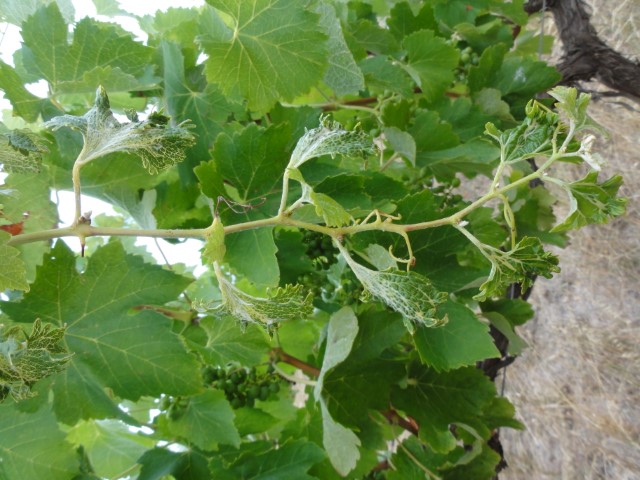Volatile vapour drift risk
Many chemical users know that phenoxy herbicides (like 2,4-D, MCPA, triclopyr, and picloram) come in amine, slate or ester formulations. Understanding these formulations is important, especially near sensitive broadleaf crops. They can damage crops even at low levels.
Phenoxy herbicide formulations
Phenoxy herbicides are crucial as amine, salt, or ester formulations. They behave differently when applied and even afterwards.

The main risk difference among amine, sodium salt, and ester formulations is volatile vapour production. Amine and sodium salt formulations do not create vapours at normal temperatures. In contrast, ester formulations always do.
Both High Volatile Esters (HVE) (ethyl, butyl and isobutyl esters) and Low Volatile Esters (LVE) (hexyl, octyl etc) can produce volatile vapours – it’s simply a matter of scale.
Amine formulations may produce volatile vapours if the temperature rises around 50°C, but if it’s that hot, you should not be spraying anyway.
Volatile vapour drift
The production of vapours by ester herbicides is critical. This is a risk to consider before use. It can lead to off-target spray drift damage.
Chemicals that do not produce vapours (like amine or salt formulations) cause droplet drift. This drift is usually limited to a few hundred metres, depending on conditions.
Herbicides that produce vapours (like esters) drift differently. They can drift as droplets and also as invisible vapours. Vapours can travel far from the target, even many kilometres. This poses a big risk to sensitive crops like tomatoes, vines, and melons.
Ester herbicides can re-volatilise or drift long after application, leading to damage.
To minimise drift, there are restrictions. You must apply all phenoxy herbicides using VERY COARSE droplets. This follows the American Society of Agricultural Engineers Standard (ASAE SS72). Also, apply them when the wind speed is between 3 and 15 km/h.
Weather conditions and drift
Wind impacts droplet drift risk and is key in volatile vapour drift. But vapour drift can occur even in conditions that appear ideal.
Some believe calm days are best for spraying. Yet, calm conditions, especially in autumn or spring, may show atmospheric inversion. Spraying herbicides like esters during inversion conditions can be disastrous. Vapours can drift many kilometres, and their landing spots are unpredictable.
Avoid spraying when extreme temperatures are forecast, especially with esters. Vapours may still form days after application.
Restrictions for using certain ester herbicides
Anyone who uses ester formulations of 2,4-D, 2,4-DB, MCPA or triclopyr (i.e., ‘restricted use’ chemicals) in Victoria must hold a valid Agricultural Chemical User Permit (ACUP) or be working under the direct supervision of an ACUP holder.
‘Restricted use’ chemicals are agricultural chemical products that:
- are Schedule 7 Poisons (Dangerous Poisons)
- contain atrazine, metham sodium or ester formulations of 2,4-D, 2,4-DB, MCPA or triclopyr.
In addition, the use of ester herbicides is restricted in Agricultural Chemical Control Areas (ACCA) when they are in operation. This is to provide protection for valuable crops during their growing seasons.
It is compulsory to make specified records within 48 hours of using an agricultural chemical product and keep these records for a period of two years.
More resources
- Buffer zones and vegetative barriers — Buffer zones and vegetative barriers are useful tools. They help reduce the risk of spray drift when using agricultural chemicals.
- Living in harmony pesticides and bees — Information on managing risks associated with agricultural spraying near apiary sites.
- Recognising surface temperature inversions — It's unsafe to spray when surface temperature inversions may occur. This increases the chance of spray drift. Learn how to identify weather conditions associated with surface temperature inversions.
- Spray drift restraints and mandatory buffer zones — This page explains how to manage spray drift risks. It covers the correct use of mandatory buffer zone labels.
- Visual Guide to estimating wind speed — This guide is not a replacement for hand-held weather meters. You can find these at spray equipment suppliers.